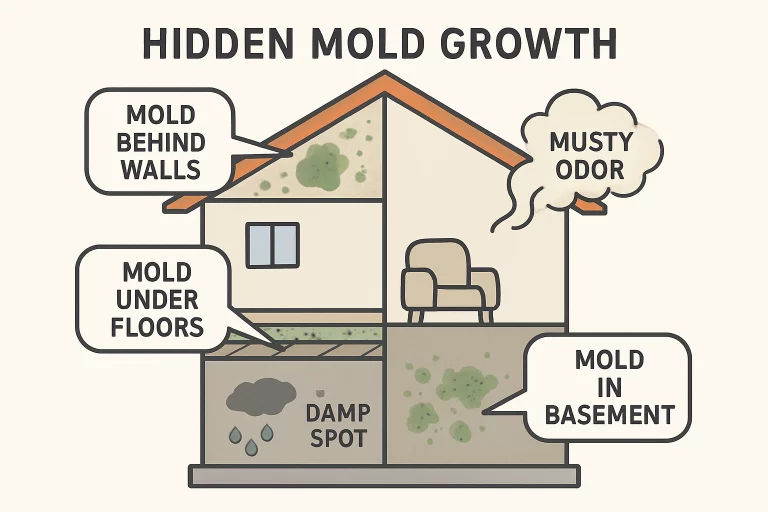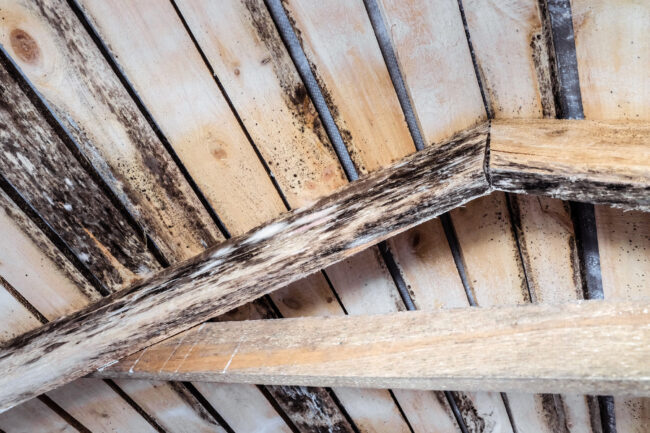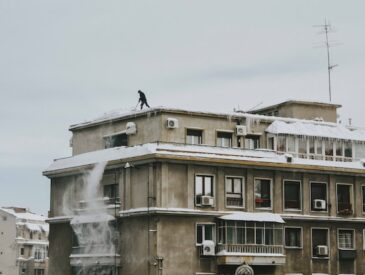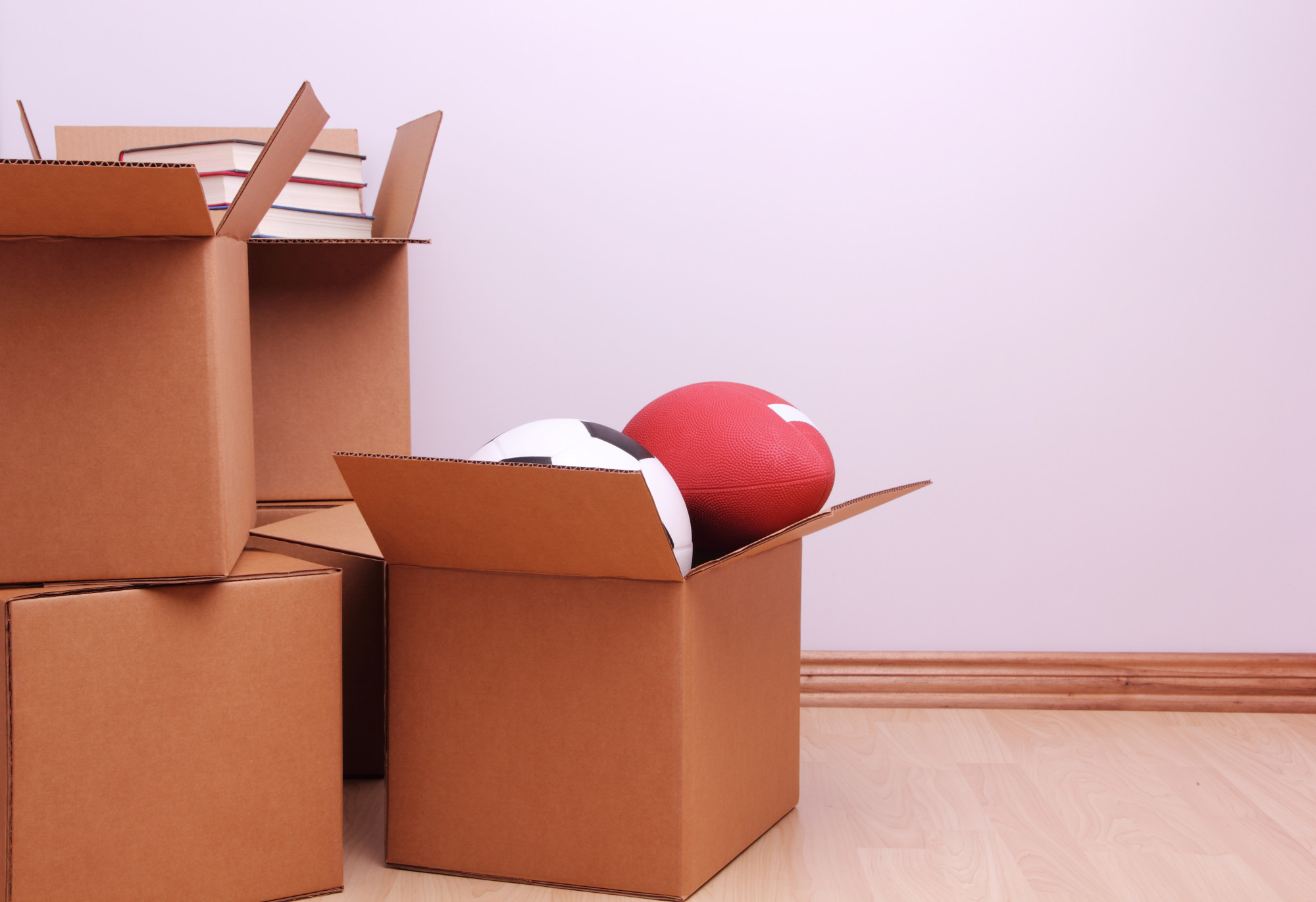Contents
Key Takeaways:
- Mold thrives in damp, poorly ventilated areas and can cause significant health issues if not addressed.
- Regular inspections and vigilant moisture control are essential steps for preventing hidden mold growth within homes.
- Updating homes with mold-resistant materials and improving airflow can dramatically minimize mold risks in susceptible areas.
Understanding Mold and Its Hidden Dangers
Mold is a hidden threat that thrives in dark, moist, and rarely accessed areas, such as behind wallpaper, under flooring, and inside air ducts. It often goes unnoticed until it causes musty odors, health issues, or visible damage. To catch these issues early, a thorough mold inspection can help identify hidden colonies before they become a problem. Mold weakens building materials, such as wood, drywall, and insulation, potentially compromising the structural integrity of a home. More critically, it can trigger asthma, allergic reactions, and severe respiratory problems. Spaces like basements and attics, which often have poor lighting and airflow, provide ideal conditions for mold to spread quickly.

Common Causes of Hidden Mold Growth
The primary ingredient for mold proliferation is moisture. Even modern homes can quickly become susceptible to hidden mold if certain conditions persist. Understanding the most common culprits behind concealed mold growth is key to prevention and early intervention. When mold is discovered, prompt and thorough mold removal is critical to halt its spread and protect both the home’s structure and the health of its occupants. Addressing moisture sources and ensuring effective mold removal creates a safer, healthier living environment.
- Water Leaks: Hidden plumbing leaks, such as those under cabinets, inside walls, or behind large appliances, can remain undetected for weeks or even months. Such leaks create a continuous moisture supply for mold, allowing it to thrive out of sight until walls or floors show advanced damage.
- High Humidity: When indoor humidity consistently rises above 60%, mold spores are far more likely to germinate and colonize. Bathrooms without proper venting, laundry rooms, and basements are areas where humidity control often falls short.
- Poor Ventilation: Stagnant areas where air seldom circulates—such as unventilated closets, crawl spaces, or attics—trap moisture and promote rapid mold development. Bathrooms and kitchens are especially problematic if exhaust fans aren’t used regularly or are missing altogether.
- Condensation: Repeated condensation on cold surfaces, such as windows, pipes, or poorly insulated exterior walls, creates ideal microenvironments for mold. In winter or during rainy seasons, these surfaces remain damp long enough for spores to take root and flourish.
Health Implications of Mold Exposure
Hidden mold isn’t simply an aesthetic or structural nuisance—it can also cause a wide range of health issues, particularly for individuals with sensitive health conditions. Even low-level exposure to mold spores can cause symptoms such as nasal congestion, persistent coughing, throat irritation, frequent sneezing, red or itchy eyes, and skin rashes. For individuals with allergies, asthma, or compromised immune systems, exposure to mold may lead to more severe reactions and exacerbate preexisting conditions. Continued or heavy exposure may result in chronic respiratory illnesses, bronchitis, and difficulty breathing, especially in young children or the elderly. Therefore, early action and regular preventive practices are vital for maintaining a safe indoor environment.
Medical research, such as findings from Harvard Health, strongly links mold exposure to an increased risk of respiratory illness and other adverse health outcomes. These risks underscore the importance of controlling humidity levels and promptly addressing any sources of unwanted moisture within the home.
Identifying Hidden Mold in Your Home
The challenge of hidden mold is that it often remains undetected. Rather than waiting until the situation is severe, homeowners should familiarize themselves with early warning signs, so action can be taken while problems are still manageable.
- Musty Odors: One of the most common indicators is the sudden or persistent presence of a musty, earthy smell in specific rooms or storage areas. Mold infestations often emit this odor long before they are visible.
- Visible Discoloration: Stains, dark spots, or yellowish patches on ceilings, walls, or baseboards may be clues that mold is thriving out of sight, just under the surface materials.
- Water Damage: Evidence of water damage—such as peeling paint, swelling drywall, buckling flooring, or water stains—signals the presence of excessive moisture, which creates ideal conditions for clandestine mold growth.
To learn more about hidden warning signs and best practices for identification, refer to this resource on recognizing the warning signs of mold growth.
Effective Strategies to Prevent Hidden Mold
Preventing hidden mold requires consistent monitoring and proactive home care. Maintaining indoor humidity between 30% and 50% helps reduce the moisture that mold needs to grow. Dehumidifiers and well-maintained air conditioning systems are especially useful in damp areas, such as basements. Promptly fixing even small leaks in plumbing, roofing, or windows prevents water buildup that can feed mold colonies. Ensuring proper ventilation in kitchens, bathrooms, and attics further discourages mold growth by keeping air moving and moisture levels down.
Utilizing Mold-Resistant Materials
Choosing mold-resistant materials during construction or renovations adds a strong layer of defense. Mold-resistant drywall, which resists moisture and prevents spore buildup, is ideal for high-humidity spaces. Specialized paints with antimicrobial properties stop mold from growing on walls and ceilings. Durable flooring options, such as vinyl, tile, or sealed concrete, resist moisture far better than carpet or wood. These materials provide long-term protection and reduce the need for future mold remediation.
When to Seek Professional Help
DIY solutions work for minor mold problems, but professional help is needed in severe cases. If mold covers more than 10 square feet, appears in hidden areas such as HVAC systems, or causes ongoing health issues, it’s time to call in experts. Mold remediation professionals utilize advanced tools, such as infrared cameras and industrial air purifiers, to locate and eliminate hidden mold. Their expertise ensures a complete cleanup and prevents future recurrence. Following major water events, such as floods or sewage backups, professional inspections are crucial for ensuring long-term safety.
Maintaining a Mold-Free Home
Preventing mold in the long term requires routine maintenance and awareness. Inspect high-risk areas—such as under sinks, attics, and crawl spaces—for dampness or leaks on a regular basis. Ventilation should be maintained throughout the home using fans, open windows, and well-functioning HVAC systems. Promptly fixing any water issues, from plumbing leaks to damaged gutters, prevents mold from forming. By staying vigilant and acting quickly, homeowners can protect their property and maintain a safe, healthy indoor environment.





